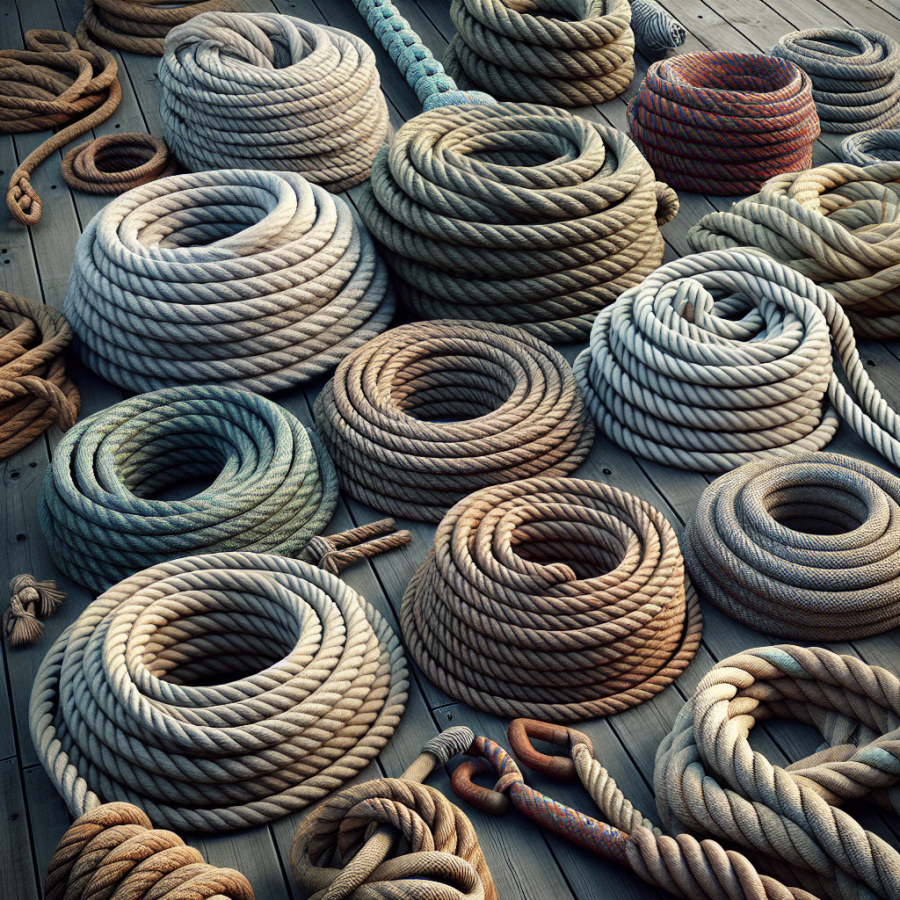Nautical Necessity: How Rope Keeps Ships Afloat and Functioning
Rope remains a crucial component in the maritime industry, playing an integral role in various operations aboard ships. Its versatility allows sailors to perform critical tasks essential to a vessel's functionality and safety. Despite the emergence of modern materials and technology, traditional rope work continues to be a testament to the time-honored seamanship that has kept sailors afloat for centuries.
One of the primary functions of rope on a ship is the mooring and anchoring process. Mooring ropes, made of strong, durable fibers, can withstand the constant stress and friction from holding a vessel against a dock or pier. These ropes ensure that ships remain stationary at port, preventing unwanted drift and potential collisions. Similarly, anchoring ropes, combined with chains, secure the anchor to the seafloor, providing stability even in tumultuous weather conditions.
Rope also plays a vital part in the rigging of sailing ships. The standing rigging, composed of sturdy ropes or wires, supports the masts and spars, whereas the running rigging utilizes ropes to control the movement of sails and spars, allowing for precise navigation as dictated by wind and waves. The selection of the proper type and diameter of rope is critical for managing the immense forces exerted on the sails. Too weak a rope may snap under pressure, whereas a rope that is unnecessarily thick can hinder efficiency and ease of handling.
On modern vessels, ropes serve as indispensable tools in safety equipment. Lifebuoys, life rafts, and rescue lines are connected to ropes to facilitate deployment and ensure they can be secured to the ship or thrown to a person overboard. Moreover, ropes commonly make up the lifelines installed along the deck and emergency towlines used in recovery or assistance of distressed vessels.
The advancements in rope materials, such as the shift from natural fibers like manila and hemp to synthetic polymers like nylon, polyester, and polypropylene, have significantly improved the strength, durability, and longevity of maritime ropes. These synthetic ropes are resistant to rot, mildew, and the corrosive effects of saltwater, making them more suitable for the harsh marine environment.
In cargo operations, ropes are fundamental for the lifting, moving, and securing of cargo. Crane ropes hoist containers on and off ships, while lashings and tie-downs secure them during transit to prevent shifting that could jeopardize the ship's stability or cause damage to the goods.
The navigational aspect of seafaring also benefits from the use of ropes.
Read also:
The Thrilling World of Polocrosse: Horseback Action Unleashed
Climbing to New Heights: Ropes' Critical Role in Mountain Expeditions
Mountain expeditions require meticulous preparation, with climbers facing a host of unpredictable challenges as they ascend to dizzying altitudes. Among the most vital pieces of equipment in their arsenal is rope, a tool whose importance cannot be overstated. Rope serves as a lifeline, quite literally, enabling teams to traverse crevasses, scale sheer cliff faces, establish routes, and secure essential safety measures.
One of the primary uses of rope in mountain climbing is for belaying—a technique used to control the rope so that a falling climber does not fall very far. The act of belaying requires a belayer to feed out rope to a lead climber while being prepared to lock off the rope in an instant, should a fall occur. The rope system in place thus provides a vital safeguard that protects climbers from the consequences of a slip or misstep on precarious terrain.
When navigating particularly dangerous sections of a mountain, such as ice walls or vertical rock faces, climbers rely on ropes to ascend safely. This process, known as fixed-line climbing, involves attaching ropes to the mountain at regular intervals. Climbers then use harnesses with specialized ascenders that grip the rope, allowing them to move upward while remaining tethered. This method not only ensures safety but also preserves energy, as climbers can focus on proper technique without the constant fear of falling.
Apart from their role in the ascent, ropes are also critical for the descent, particularly in the form of rappelling or abseiling. This controlled descent technique involves the climber using friction devices to glide down the rope, providing a safe and efficient way to get off the mountain once the summit has been reached or if retreat is necessary due to weather changes or other emergencies.
Besides safety, ropes enable climbers to carry out a technique known as crevasse rescue. In glacier-clad peaks, hidden crevasses pose a major threat. Should a climber fall into one, team members must act quickly to execute a rescue. This involves setting up a pulley system with the rope to extract the fallen climber, a complex but life-saving procedure made possible only through the strength and reliability of the rope.
The versatility of rope extends to its material composition as well. Dynamic ropes, which are designed to stretch under load to absorb the energy of a fall, are selected for their elasticity and shock-absorbing characteristics.




